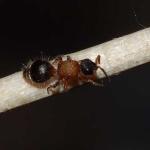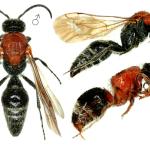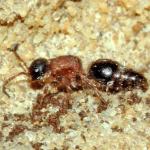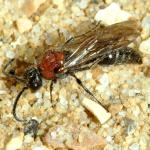Identification keys and general biology are given in Richards (1980), Gauld & Bolton (1988) and Yeo & Corbet (1995). Females are wingless, but males are fully-winged.
In England from Dorset to Kent, including the Isle of Wight, and north to Oxfordshire, Bedfordshire, Cambridgeshire and Norfolk. Also the Channel Islands.
Overseas, found in many parts of mainland Europe (Norway, Sweden, Finland, Denmark, The Netherlands, France, Germany, Italy and Hungary).
A Nationally Notable (Nb) species (Falk 1991).
Open sandy areas in warm, sunny situations both on the coast, for example sand dunes, and inland, for example heathland and sand pits.
Males have been found on umbellifers and ragworts.
No information available.
1998





